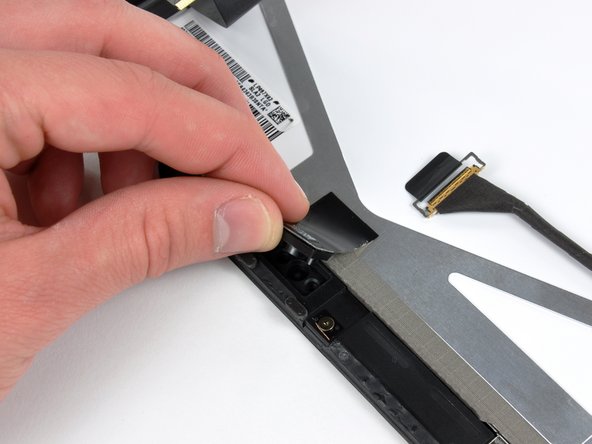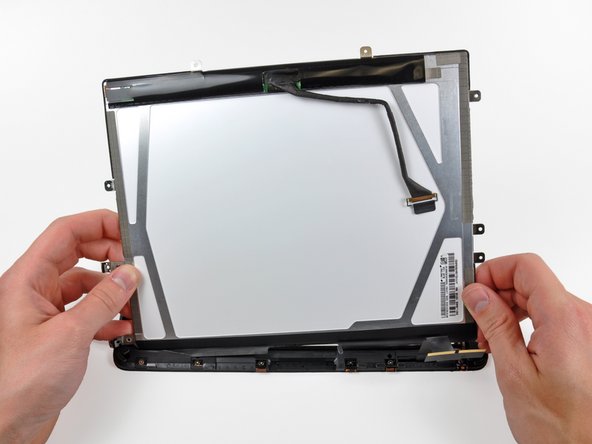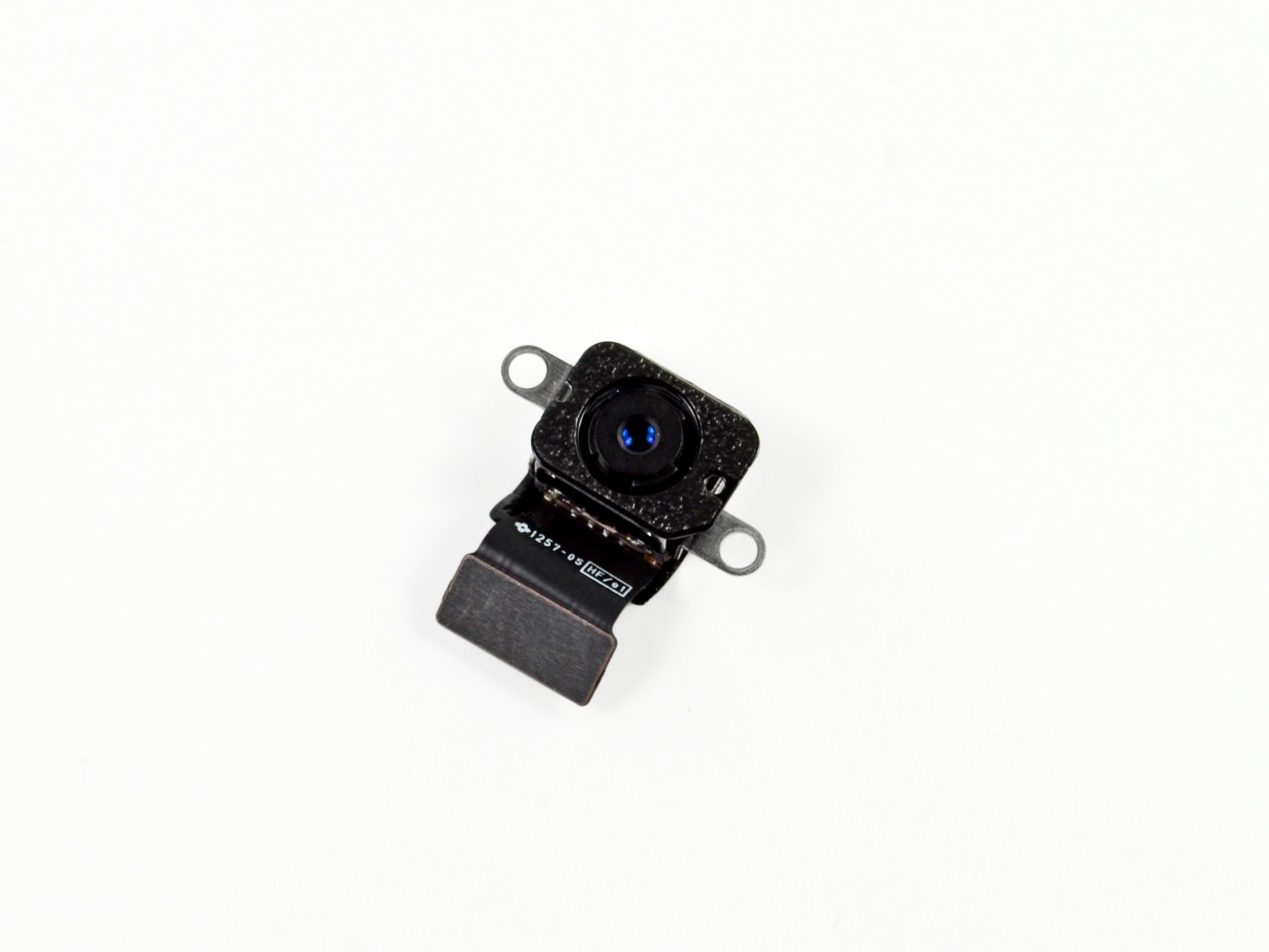How to Replace Apple iPad Wi-Fi LCD: Step-by-Step Guide
Duration: 45 minutes
Steps: 19 Steps
Heads up! If you’re feeling a bit overwhelmed or just want a pro to take care of it, no worries at all! You can always schedule a repair and let the experts handle the nitty-gritty. You’ve got this!
Ready to give your iPad a fresh look? Follow this guide to swap out that LCD like a pro! It’s easier than you think, and we’ve got your back. If you need help, you can always schedule a repair.
Step 1
Remember to wear safety glasses to protect your eyes, and handle the LCD screen with care.
– If your screen is sporting a crack, let’s keep it from shattering further and protect your fingers while you work. Grab some tape and cover that glass up!
– Start by laying down overlapping strips of clear packing tape all over your device’s display. Make sure it’s completely covered to keep things tidy!
– Try your best to stick to the rest of the guide as we walk through this together. Just a heads up: once the glass is compromised, it might crack more as you go. You might even need to use a metal prying tool to scoop out the pieces. No worries, you got this!
Step 2
– There are 14 metal clips keeping the display assembly snug and secure, as shown to the left. As you start prying in the following steps, try your best to maneuver around these clips without slicing through them with your trusty opening tool. You’ve got this!
Step 3
– Slide a metal spudger into the gap between the top edge of the display assembly and the rear panel assembly.
– Gently twist the spudger away from you to pop those tabs loose along the top edge of the display.
– Now, grab a second metal spudger and slide it in the same spot to keep those tabs from snapping back. You’re doing great!
Tools Used
Step 4
Pry with care and a gentle touch—if you hit a snag, take a breather and try another spot.
– Grab your trusty spudger and gently glide it along the right edge of the iPad. Easy does it!
– Now, let’s talk about those sneaky clips! The front panel is snugly held onto the aluminum back by metal clips at the top, bottom, and left sides. But on the right side, we’ve got some plastic tabs that slide into their cozy spots in the backplate.
– Once you’ve freed those clips, carefully lift the left side of the front panel and slide it to the left to release the tabs from their aluminum home. You’re doing great!
Step 6
– Alright, let’s dive into the fun part! In these upcoming steps, you’ll be gently disconnecting the three cables that link the display assembly to the logic board. These cables are responsible for connecting some important components, so let’s make sure we handle them with care!
Step 7
Remember, it’s the retaining flap you’re flipping up, not the socket itself!
– Grab your trusty plastic opening tool and gently lift those little retaining flaps that are keeping the digitizer ribbon cables snug in their sockets on the logic board.
– Now, with a steady hand, pull the digitizer ribbon cables straight out of their cozy homes.
Step 8
– Grab a trusty plastic opening tool and carefully pop the ambient light sensor connector out of its socket by gently nudging it upward. You’ve got this!
Step 9
Gently slide the connector away from the logic board while keeping it parallel to the surface. You’ve got this!
– Gently lift the metal retainer using its handy black plastic pull tab to release the display data cable from the main board.
– Carefully slide the cable connector out from its cozy socket.
Step 11
Watch out for that ambient light sensor! If you accidentally crease it below the top section, the sticky part might just decide to take a vacation and break off. Keep it safe and sound!
No need to worry about removing the ambient light sensor from the back of the LCD if you’re reusing it. Keep it cozy right where it is!
– Grab your trusty plastic opening tool and gently slide it under the ambient light sensor board to pop it off the adhesive that’s holding it to the display frame. Easy does it!
– Once you’ve got some wiggle room, peel that ambient light sensor away from the LCD like it’s a sticker on a fresh notebook.
– If you need a little extra help, feel free to attach the plastic view window to your shiny new ambient light sensor before you put it in place.
Step 13
– First up, let’s tackle those three T5 Torx screws that are holding the clips and LCD brackets snugly in place—these are the ones covered in that pesky EMI tape near the home button switch. Get them out of there!
– Next, gently peel back the display clip along with its attached tape from the sleek black plastic display frame. Take your time, we want to keep things smooth.
– If you’re swapping out the LCD, remember to bring those pieces of EMI tape and their trusty clips over to the new LCD. They’ve got your back!
Step 15
Just a friendly reminder: try to avoid bending that LCD too much, since it’s made of glass and we want to keep it safe and sound!
– Get ready to rock and roll, tech ninja! Grab that cool plastic opening tool and slide the edge under one of those sweet ears attached to the LCD frame.
– Now let’s kick this up a notch! Gently wiggle that tool and watch as the roof is lifted off that stubborn adhesive. You’ve got this, repair master!
Step 18
– If your screen is still playing hard to get, gently peel off the strip of EMI tape located near the ambient light sensor socket.
– When you’re ready to roll with your new LCD, make sure to bring that tape along with you.
– If the tape is already snug on your LCD and you’re keeping it, just breeze past this step. But if you’re swapping out the LCD too, make sure to transfer that trusty strip of EMI tape to your shiny new screen.
Step 19
– If they’re still looking good, go ahead and move those clips and EMI tape from the bottom of the old LCD to your shiny new one. You’ve got this!











































